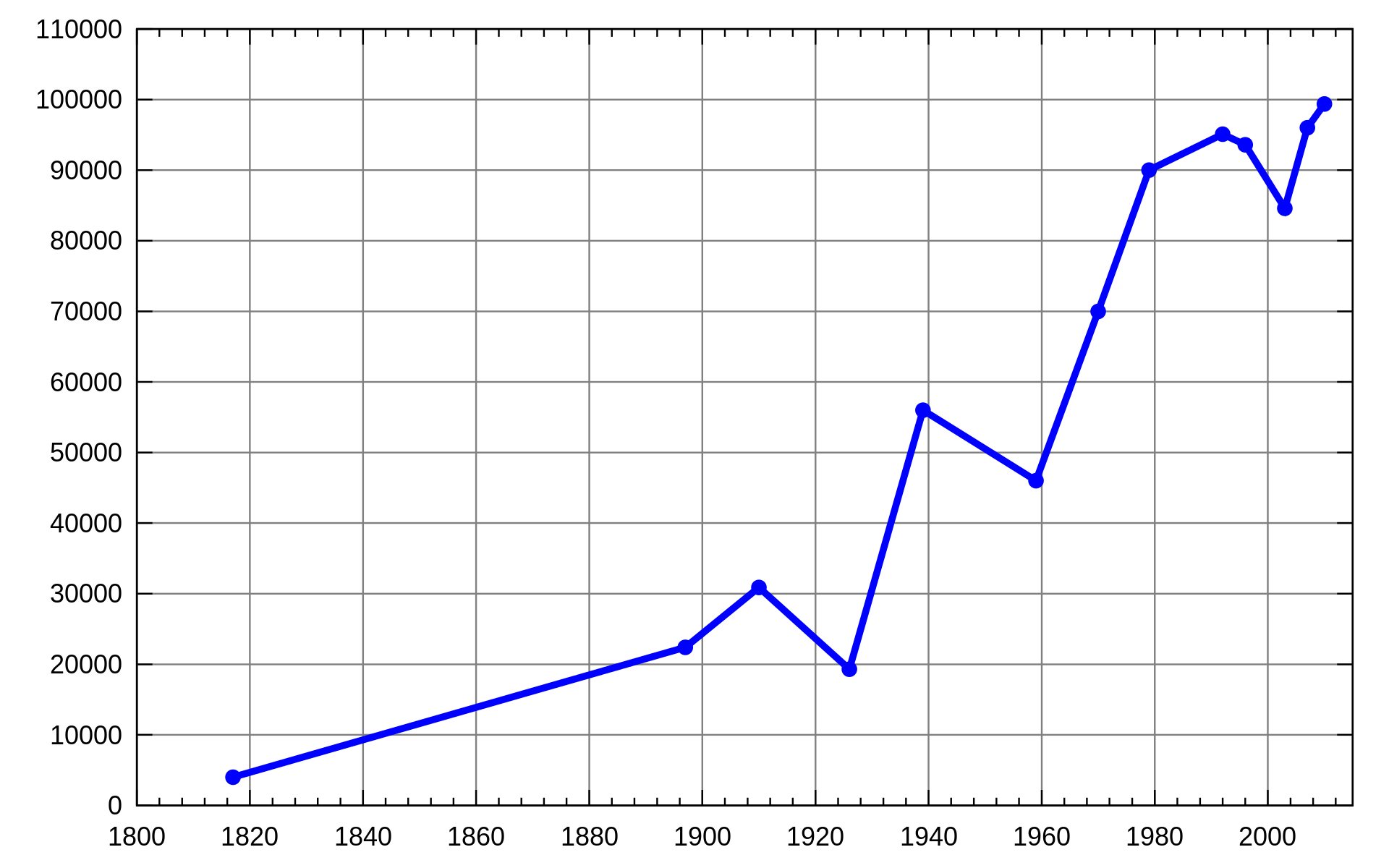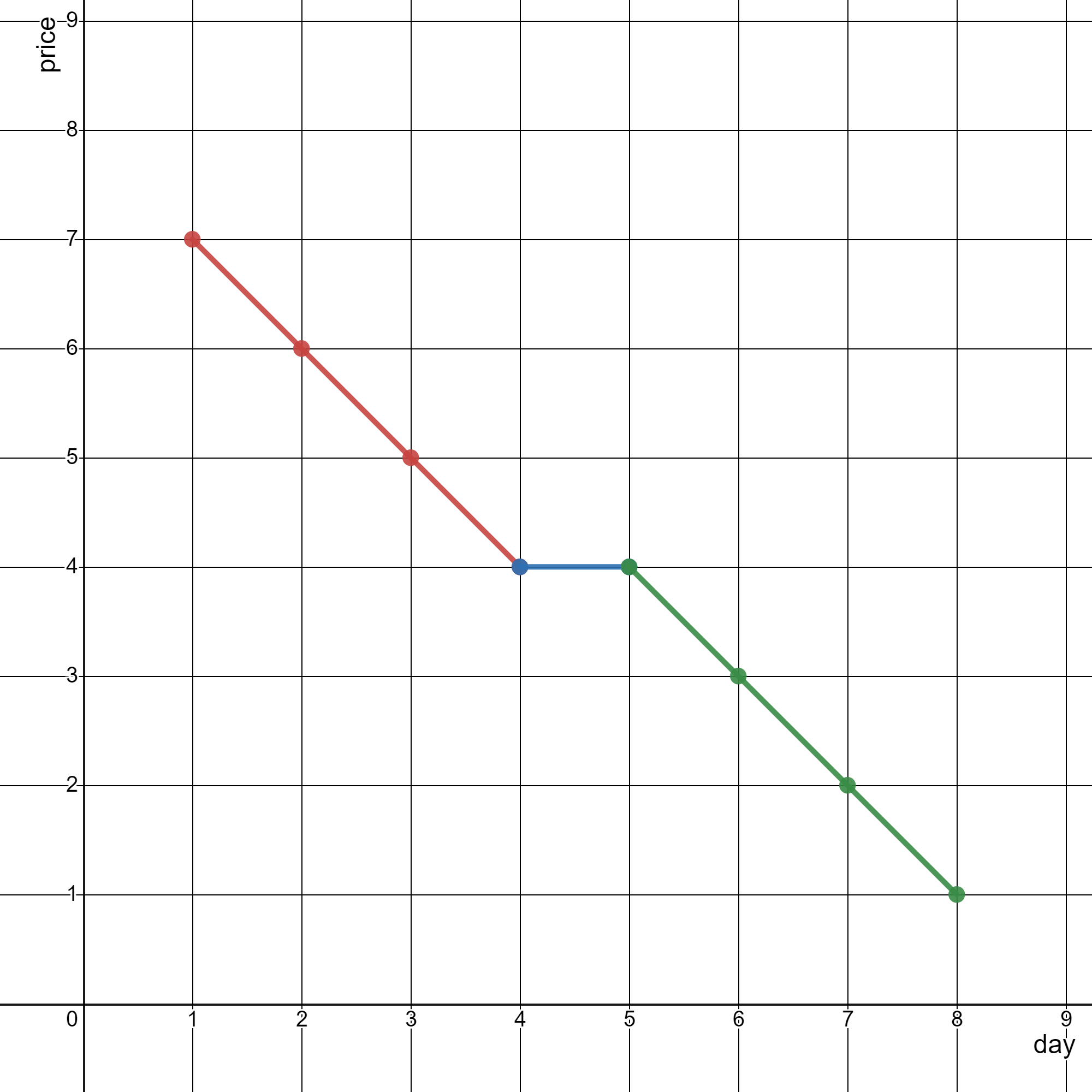You are given a 2D integer array stockPrices where stockPrices[i] = [dayi, pricei] indicates the price of the stock on day dayi is pricei. A line chart is created from the array by plotting the points on an XY plane with the X-axis representing the day and the Y-axis representing the price and connecting adjacent points. One such example is shown below:
Return the minimum number of lines needed to represent the line chart.
Input: stockPrices = [[1,7],[2,6],[3,5],[4,4],[5,4],[6,3],[7,2],[8,1]] Output: 3 Explanation: The diagram above represents the input, with the X-axis representing the day and Y-axis representing the price. The following 3 lines can be drawn to represent the line chart: - Line 1 (in red) from (1,7) to (4,4) passing through (1,7), (2,6), (3,5), and (4,4). - Line 2 (in blue) from (4,4) to (5,4). - Line 3 (in green) from (5,4) to (8,1) passing through (5,4), (6,3), (7,2), and (8,1). It can be shown that it is not possible to represent the line chart using less than 3 lines.
Input: stockPrices = [[3,4],[1,2],[7,8],[2,3]] Output: 1 Explanation: As shown in the diagram above, the line chart can be represented with a single line.
1 <= stockPrices.length <= 105stockPrices[i].length == 21 <= dayi, pricei <= 109- All
dayiare distinct.
impl Solution {
pub fn minimum_lines(stock_prices: Vec<Vec<i32>>) -> i32 {
let mut stock_prices = stock_prices;
let mut ret = (stock_prices.len() > 1) as i32;
stock_prices.sort_unstable();
for i in 1..stock_prices.len() - 1 {
let (x0, y0) = (stock_prices[i - 1][0] as i64, stock_prices[i - 1][1] as i64);
let (x1, y1) = (stock_prices[i][0] as i64, stock_prices[i][1] as i64);
let (x2, y2) = (stock_prices[i + 1][0] as i64, stock_prices[i + 1][1] as i64);
ret += ((y1 - y0) * (x2 - x1) != (y2 - y1) * (x1 - x0)) as i32;
}
ret
}
}

